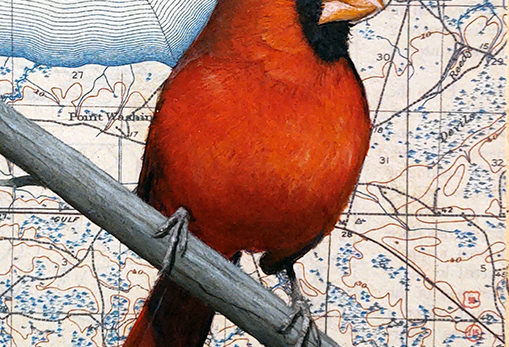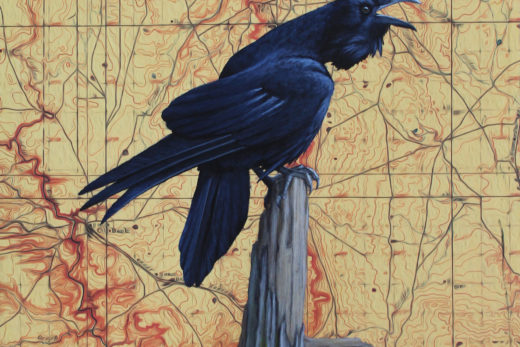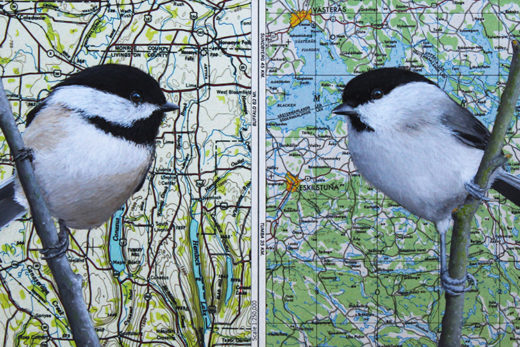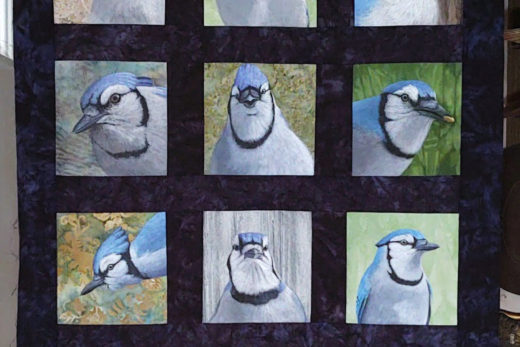The Common Nighthawk will always be tied to Summer and hot days. When I was in 7th grade my Dad decided, for health and sanity, he wanted to be a bit closer to where he worked on the Eglin AFB Reservation in northwest Florida. Turn a 45-minute commute into a five-minute drive. He happened to find a nine acre piece of wooded land with a nice view of a shallow valley to the south.
During the winter as 1980 headed in 1981, he had the top bushhogged and cleaned with the long term goal of building a house. We’d first live in a trailer while Dad built the house. I do mean “Dad built the house.” Other than the roof trusses and the foundation concrete, he (and we) did it all; electric, plumbing, septic, insulation, roofing.
During the first summer I noticed a pair of birds flying over our neighbor’s pasture. It was a sweltering evening with the sun a dusty burnt red orb sitting on the horizon, a stretch of summer without afternoon thunderstorms to cool things down a bit. The pair called with a nasally “peent” flying an erratic circuit. Occassinally one would push over into a dive and pull up suddenly just above the pasture grass with a loud whooshing sound.
Dad said they were called Bullbats. The name comes from early confusion about them. They take flight about the same time bats do with a similar spastic flight. To early immigrants they appeared to be a larger bat. They are migrators, wintering in South America before heading north to breed across the US (except southern California/Arizona) and into Canada.
They became a familiar accessory for that dusty red sun. They were always there until I left Defuniak. Regardless of the day’s activities or kind of day you might’ve had, they’d appear searching for a meal of insects. It was comforting to hear the call and swoosh each summer evening. It was like the clockwork, the universe’s routine still functioned and the “peent” was the sound of it moving along.
This spring (2022) I heard and saw the first Nighthawk I’ve seen in nearly 35 years. Not suprising it was a hot day. I nearly dropped what I had in my hand when I heard the peent. Once again I was at the edge of a hayfield. In Defuniak, they were always low flyers, no higher than 100 feet from the ground. Here they were up higher, closer to about 500 feet. It was like seeing an old acquaintance after a long absence. It was a reminder the clockwork still functioned.
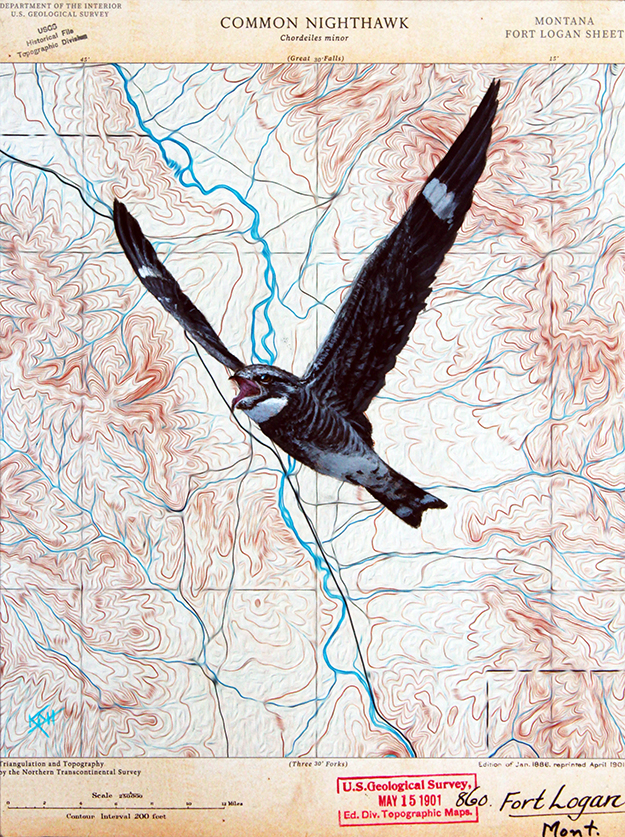
I used a Montana map because the inspiration to paint a Nighthawk came from The Nighthawk’s Evening: Notes of a Field Biologist by Gretchen N. Newberry. She studied the Nighthawk across the upper Midwest.
